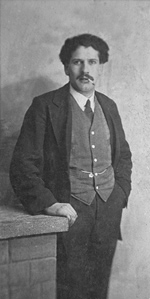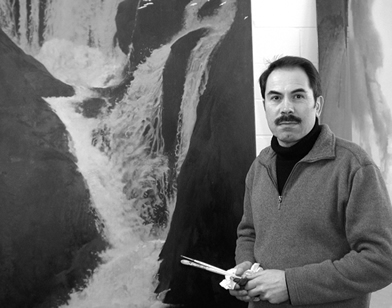artist

photo copyright Ken Adlard
early work
Stephen Taylor studied Fine Art at Leeds University with T.J. Clark and was taught observational painting by Paul Gopal Choudhury. He then worked on perception and technique in John Constable at Essex University and as a visiting student at Yale. After two years as resident artist at Felsted School, Stephen turned from theory to practice while teaching art history part-time and leading the painting courses at The Open College of The Arts. Throughout this time a wide range of private commissions helped him to develop his work.
change
In the 90's he reorganised his career to focus on landscape. Between 1999 and 2007 he worked exclusively in a single field in North Essex, which yeilded two exhibitions, at King's College, Cambridge 2002 and Vertigo, Shoreditch, London, 2006. The shows demonstrated what concerted attention to a single place could offer contemporary art. There is an extened account of the oak project and artist in chapter six of Alain de Botton's The Pleasures and Sorrows of Work, Penguin 2009. The story is also told in the artist's own book "Oak: one tree, three years, fifty paintings", Princeton Architectural Press, 2011.
An altarpiece, The Hospitality of Abraham, for The Church of The Most Holy Trinity, Reading, 2004, is an exception to this landscape work, though it sets redemptive figures within the created world.
now
Painting water in a small valley in Wales, and further developing a method of mapping colour textures from digital HDR images to help parse complex natural scenes.
interview: with Martin Newman for the Huffington Post click here


past, present, future
The man in the waistcoat was my grandfather, Jack Taylor. He left his village blacksmith's home to work in a Brewery office in Birmingham - but he also found time to paint. I grew up in a suburb, went to university and now paint full time. We never met, but we work in the same landscape tradition.
Making images of nature goes back to the cave. But in the industrialised West, making art to re-connect with nature flows from the tradition of Wordsworth and Cézanne. Artists like these countered negative effects of modern life by making grounded, first hand things, to read in a book or see on the wall. It's a rich tradition that crosses social class and treats connection with nature as a kind of freedom.
Early industrialisation made landscape art central to British culture, creating a vast store of ideas and techniques for the future. So it's appropriate that most prominent British art prize is at least named after the greatest British landscape painter, JMW Turner.